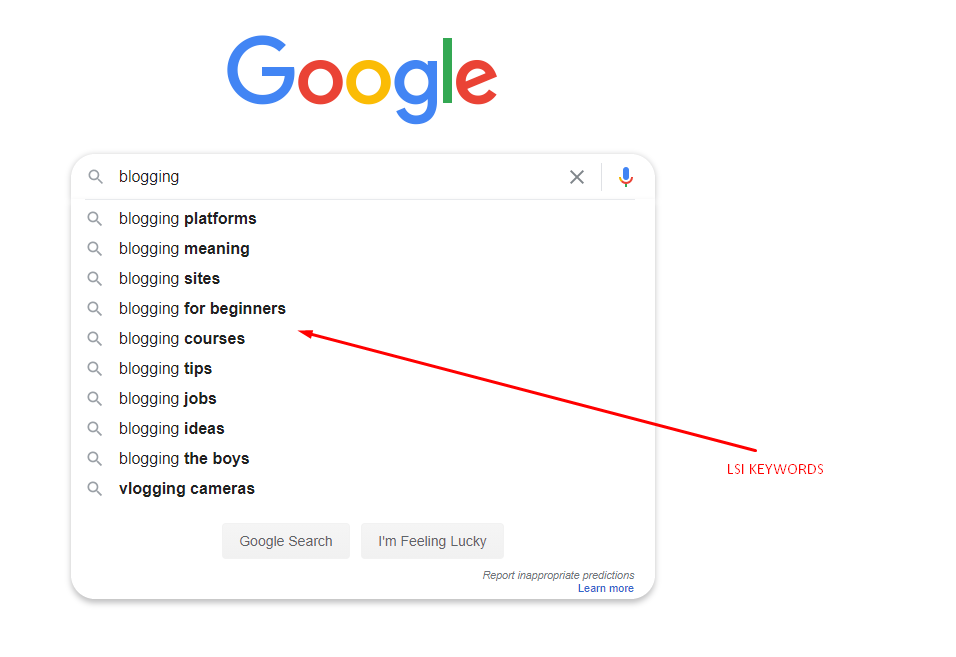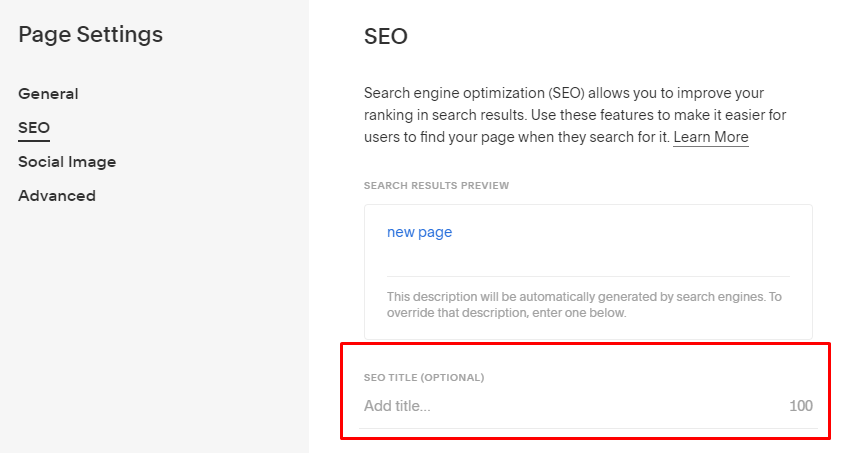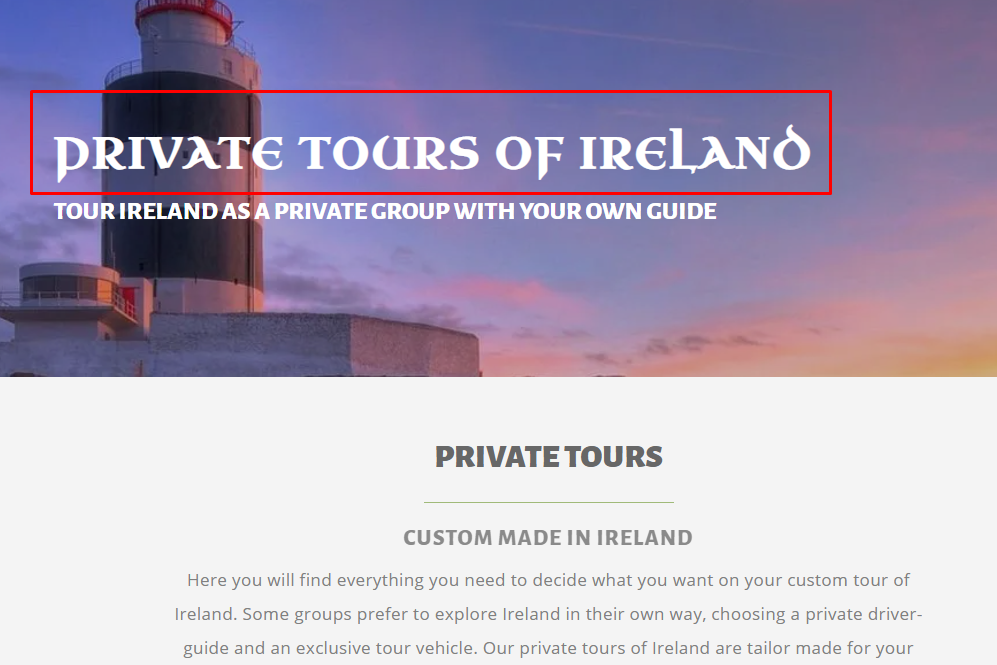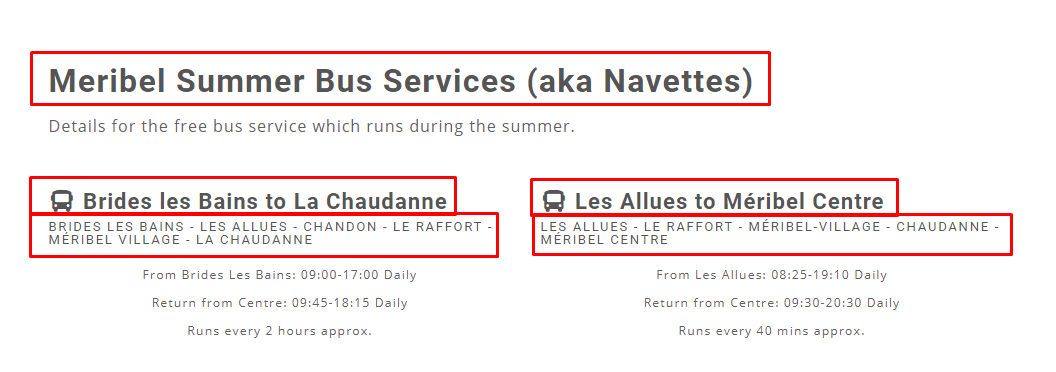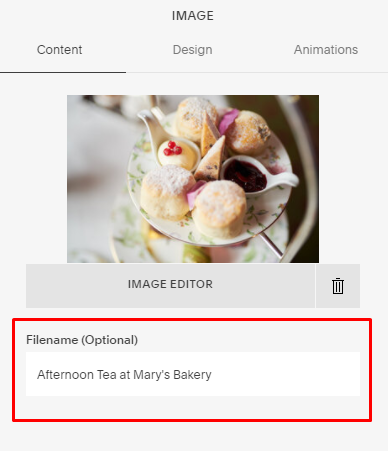The Simple Guide to SEO for Small Business [2022 Version]
How a small business can compete and succeed in Search Engine Optimisation.
So, you like the idea of being at the top of Google, hey?

Well that’s very understandable. For many business sectors, there are rich rewards for being at the top of Google.
Thankfully, you don’t need to be a technical genius, or even have much technical knowledge at all. And there are no secrets, either. Everything the best SEO people know you can find out by, well, Googling.
We have taken on and won this exact challenge many times, taking many small business right to the very top of Google in competitive markets. This article covers what we do and how you can do it for your own website, as a small company.
Where to start though? There’s almost too much information out there. This is a huge topic. We are here to help you cut through the noise, and show you the most important parts to successful SEO. Yes, there maybe over 200 ranking factors that Google take into account, but I can count on one hand the main items a small business should worry about. For most small companies looking to do DIY SEO, getting the fundamentals right is all that matters.
So, with all the unnecessary fluff removed, here’s the DIY Guide to SEO for Small Businesses.
Contents
Chapter 3
Chapter 4
Chapter 9
Chapter 10
1. What is Search Engine Optimisation (SEO)?
Getting your website to the top of Google
Search Engine Optimisation is about getting your website to the top of Google, for the right keywords, then making people click on it.
We are talking about the organic listings in Google, in other words, the free bit. That’s the blue section below. The red part shows the ads, that’s something different.
Organic Listings in Google vs Paid Ads
Then making people click
Getting to the top is only half the battle. Making people click on your listing is the other half. You see the big blue titles in the Google search results, and the grey descriptions below? You can control what they say. Yours should be the most enticing on the page. We call this Click-Through Rate Optimisation, or CTR.
There’s only one search engine: Google.
But what about Bing, Yahoo, DuckDuckGo, Ask and all the others I hear you say? Well, in the past week one of our websites got 2,402 visitors from Google, and just 117 from all the other search engines combined. A tiny improvement in our Google rankings would be worth more than all the others added together. So we focus there.
The global search engine market in 2020
The other search engines rank websites in a very similar way to Google. If you are top for Google, you’ll be in the same neck of the woods for the others.
2. SEO in 30 seconds: the super quick summary
There are 3 steps to getting to the top of Google:
Job #1 - Keyword selection
Keywords are the words that people type into the Google search bar. Keyword selection is deciding which words, or phrases, you want to rank for.
Selecting your keywords is perhaps the most important, and often, the most neglected job in SEO. One mistake here, and all the work that follows is wasted.
Job #2 - On-site Optimisation
On-site Optimisation is about the words and pictures on your website.
The first aim is to tell Google what your site is about, clearly.
If Google knows you are a café in Dublin, but only thinks your rival is, then they’ll rank you above your rival.
The second aim is to tell Google that you are an awesome company, who try harder and care more than your rivals. If you’ve put more time and care into your website, you probably put more time and care into your whole business, and you’ll be rewarded with better Google rankings.
Job #3 - Off-site Optimisation: Getting links to your website
Off-site SEO is all about getting links from other websites pointing at your website.
Google treats a link to your website as a public recommendation. If 20 websites have decided your site is worth linking to, but only 3 have for mine, it’s probably because your website is better. So, Google will rank your website above mine.
But take it as a real-world recommendation - I would trust the recommendation from the local bakery about which café in town is the best. But, I would not trust their judgement on hotels in Bali, and neither does Google.
3. Your target: top half of page 1
Page 1 is the only place worth being
Where’s the best place to hide a dead body? Page 2 of Google, no one ever goes there.
A terrible SEO joke, but it illustrates a very valid point.
A study by Backlinko of 5 million search results found that 99.2% of search clicks are on page 1 of Google. The other 0.8% are spread across all the other pages combined.
SEO that moves you from page 5 to page 2 costs money, but brings no results.
But really, it’s the top half of page 1
All listings on page 1 of Google are by no means equal though. Here’s the click pattern on page 1, again from Backlinko’s Click Through Rate study:
Click-Through Rate by Position in Google
The top 3 places get 75% of the clicks.
Be wary of SEO companies promising you page 1 of Google. The top half is where all the rewards are.
SEO is all or nothing
All the rewards are right at the top of Google. A half-done SEO campaign will cost you money, but won’t bring any rewards.
Before we start any SEO campaign we sit down to decide the time and budget we need to reach the top 5 in Google. If the answer is unrealistic, we won’t even start. No point picking a fight that you’re going to lose.
Don’t divide yourself too thin
It’s better to be top for one keyword and nowhere for another, than it is to be mid-table for both.
Select your niche, and really go for that. Only once that’s mastered, i.e. in the top 5 of Google, would you add on more target keywords.
4. Keyword Selection
This is the most important step. If you pick the wrong keywords, it doesn’t matter if you do awesome SEO from then on, you still won’t gain any customers.
Perhaps the most common mistake, that we see in small business SEO, is not giving keyword selection its due care and attention. If I could give one tip to first-timers to SEO, it would be to really do your homework here.
Browsers vs Buyers
I’m going to divide the whole world of Google searches into two: Browsers and Buyers.
Browsers are people out looking for information. They are considering their options, looking at this and looking at that. They have not yet decided what to buy.
Buyers are sitting there, with the mouse in one hand and their credit card in the other. All decisions are made, and they are just looking for the right supplier to buy from.
For example: Let’s say I’m buying a new mobile phone.
Google Search #1: “Mobile Phone with great camera”
I’m browsing around, seeing the options and reading reviews. The Google Pixel handset seems to be getting great reviews, I’ll look into that…
Euros spent during this search: €0
Google Search #2: “Google Pixel”
OK, I’m narrowing it down now. Which version shall I get? Ah, I see I need to pick the memory size too, I’m checking that out…
Euros spent during this search: €0
Google Search #3: “Google Pixel 4 64gb in silver”
All the research is done, I’ve made all the decisions. I’m here to buy.
Euros spent during this search: €699
The first two searches indicate a browser mentality - I’m just looking for information, I’m not ready to buy yet. Ranking for these searches will bring you lots of traffic, but no sales.
The final search is the buyer mentality search. The website that ranks for that last search is the one that gets the sale.
When picking keywords I ask myself this:
Has the searcher made all of their decisions yet? Only if the answer is yes then they are in a buyer mindset, and worth targeting.
Traffic Levels
How many people actually type your keyword into Google? Very similar sounding keywords can have wildly different search traffic levels. One of our projects is an Irish Tour Company.
Monthly Searches in Google USA
Those three keywords sound very similar. Yet, if we rank #1 for “Ireland Tours” we would sell ten times more holidays than ranking #1 for “Tour of Ireland”
Google Adwords will give you search traffic levels. You can sign up for free and don’t have to actually buy any ads to see the search data.
Competition Levels
There’s no point picking a fight you can’t win.
Before starting an SEO campaign, we’ll always research who else is competing for those keywords, and how much effort they’re putting into their SEO.
How big are their sites? How many links do they have? If your keyword is dominated by huge websites, then it’s probably a fight you can’t win.
If, however, there are at least one or two small companies like yourself on page 1 of Google, then you know it’s possible.
Assessing competition levels is difficult. There’s a huge number of factors to look at. It is also both an art and a science.
Quick tip - you can ignore the “competition level” within Google Adwords. They are pointing out the competition level for the advertising slots, not the free organic listings.
Rule of Thumb: Competitions levels are normally proportional to traffic levels. The more web searches, the more companies will compete for that traffic.
Targeting the lower traffic keywords will be much easier to start with.
Also, there are specific SEO tools that’ll really help with competition levels. You plug in your keywords, they’ll look at a gazillion factors and boil it down to one simple number for you. Two of our favourites are ahrefs.com and Moz.com. Both offer cheap / free trial periods.
Keyword Explorer on ahrefs.com
Bringing it all together:
“Long Tail” vs “Short Tail” Keywords
There’s a lot of factors above to think about. Thankfully, to make life simpler, us SEO nerds class our keywords into 2 camps: long tail keywords and short tail keywords.
Short tail keywords
These are the very broad, generic searches:
“best mobile phone”
“ski holidays”
“engagement ring“
They are normally high traffic, high competition and low conversion rate. They are browser mentality. These website visitors have not yet made all of their decisions on what they’d like to purchase, they are just looking for information.
Long tail keywords
These are the very specific search terms:
“Google Pixel 3 64gb in silver”
“catered ski chalet in Méribel with hot tub”
“hand made engagement ring Galway”
They are normally low traffic, low competition and high conversion rate, They are buyer mentality. These website visitors know exactly what they’d like to buy, and are just looking for the right supplier.
Side Note - short tail keywords are generally shorter than long tail, hence the name, but that’s not always the case. What’s really important is not the length, it’s where the search is a browser or buyer.
Rule of Thumb for Keyword Selections
Yes, we’ve gone a bit deep on keyword selection. But it’s the most important job in SEO. Get that wrong, and all the backlinks in the world won’t help.
The rule of thumb is lovely and simple though, thankfully.
You should start with long tail keywords. They have the highest conversion rate and the lowest competition. Too long tail means no traffic though. So go for the longest keywords that still have at least some traffic. You can check traffic levels in Google Adwords. As long as it’s not saying zero, you’re good to go.
Keyword Competition on Google Adwords
Then, once you are top of Google for that, you can add in some medium tail keywords. Once you have mastered them, you can finally add in the short tail ones.
Example Keyword Selections
Example: long tail
“Catered Chalet Holiday in Méribel with hot tub”
That’s a great long tail keyword to start with. It does get a small amount of traffic, so low competition, and should have a high conversion rate as our products exactly match their needs.
Example: medium tail
“Luxury Chalet in Méribel”
That’s a medium tail keyword. I’ll attack this only once my long tail are all in the top 3 slots in Google.
Example: short tail
“Chalet in Méribel”
Once both the short and medium are mastered, I’ll attack this. High competition, but high traffic too. Conversion rate will not be great though.
Example to Avoid: Too long tail - no traffic
“Catered Chalet Holiday in Méribel for 14 people with hot tub”
That’s too long tail, it gets no traffic at all.
Example to Avoid: Too short tail - massive competition and terrible conversion rate
“Ski Holiday”
High Competition Keyword Google Adwords
That’s too short tail. Firstly, the traffic levels, and therefore competition levels, would be huge. So the investment needed to win there would be mind-boggling. And, even if we could win that, the conversion rate would be minuscule.
People doing searches like that are clearly in the browsing mindset. When they’ve researched enough and have made all their decisions, they’ll do another buyer mindset Google search before getting their credit card out. It’s that buyer mindset search we want to appear for, as that’s the one that’ll get the sale.
5. On-site optimisation: the right words in the right places
On-site optimisation, or On-page optimisation, is putting the right words in the right places on your website.
The right words are your keywords, and related terms too.
The right places are the most important bits you see first as a human visitor. Hidden code doesn’t matter. It’s about the main heading, subheadings, paragraph text, photos and links that you click on.
The Golden Rule: Write for humans
You should use the same language that you would in a conversation with a client. Real, natural English. It’s not a problem to put your sales points across and add in your keywords, but it should sound like a human talking to another human.
For example:
“We are top-rated 5/5 in TripAdvisor”
could be replaced with:
“We are the top-rated coffee shop in Dublin with 5/5 on TripAdvisor”.
That’s better. It’s clearer for your human visitors and tells Google more about your business.
Unnatural language / keyword stuffing is bad
“Our ski chalet holidays are the top-rated ski chalet holidays on TripAdvisor’s ski chalet holiday ratings”.
Who would ever say such a monstrosity?! No human would, so it should not be on your website. If you would not say it to a client in person, you are over-stuffing.
Rotate your Keywords
It’s all about natural language. If we were having a conversation, I might mention our “Dublin Coffee Shop”. Next time I might call it our “Coffee shop in Dublin”, or maybe “Dublin Café”. Natural language varies and rotates, and so should your keywords on your website.
Remember related terms, too
It would be strange to have a conversation about a café, and never mention coffee once. Or cakes, or tea, or lunch, or food, or menus.
In SEO terms you’ll hear the phrase “LSI” keywords, or Latent Semantic Indexing keywords. That’s a complicated way of saying related terms. What other words and topics would come up in a natural conversation? Make sure they appear somewhere too.
LSI Keywords (related terms) from a Google Search
The right places
Imagine you land on a web page, what would you check to see if you are in the right place?
The main title
Subtitles
The paragraph text, especially the first few sentences.
Photos, you’d have a glance at them too.
Google checks the same places as you would. And those big top-of-the-page things count the most.
Rule of thumb: The more upfront and obvious something is on your site, the more weight Google will put in it for ranking your website.
Big headings count more than small side notes
Top of the page counts more than bottom of the page
Homepage counts more than a dark-corner-of-your-website page
You can ignore anything you’ve heard about hidden code or text. You can also ignore anyone who says you can rank higher whilst keeping your site the same. Google puts most weight in the areas that are most upfront and obvious on your site. Anything in the dark corners is mostly, or completely, ignored.
Keep in mind, the weighting of page location, too. The homepage and main sales pages count far more to Google than text hidden on a blog post that’s 3 clicks from the homepage.
Have you added your keywords at all?
It’s surprising how many small businesses have just totally forgotten to put their keywords anywhere on their website! Yes, you want to write naturally, but you still need to put your keywords in so that Google knows what your site is about.
Let’s say I open a new café called “Jean’s Bakehouse”, and I want it to rank for “Coffee shop in Dublin”.
Did I ever actually used the phrase “coffee shop in Dublin” on the site? Or “Dublin Coffee Shop”, or even “Café in Dublin”? It’s easy to just say the business name, and never put the keywords in, let alone remembering to add Dublin in too.
The most important on-site places, in order of importance
1. Title Tag
This is the text that appears in the browser’s tab. It’s also what Google uses as the blue link text in the search results. It is, perhaps, the most important On-site SEO factor.
The code looks like this:
<title>Jean's Bakehouse | Top Rated Coffee Shop in Dublin</title>If you are using a CMS to edit your website (WIX, Squarespace, WordPress, etc.) then it’s probably just a field called “Page Title”.
Adding a Title Tag on Squarespace
2. The main heading - H1 tag
The biggest and main heading on your page. In technical speak, it’s probably an H1 tag.
Example of an H1 tag on a webpage
3. Link anchor text
That’s the words you can click on to move to another page within your website. Google likes them to be descriptive, so everyone knows what’s on the other side of that link. Avoid “click here”.
Good Example:
“We’ve just released our brand-new lunchtime menu”
- this tells Google the page is about our “brand-new lunchtime menu”
Bad Example:
“We’ve just released our brand-new lunchtime menu which you can see here”
- this is telling Google that the page is about “see here”
4. Subheadings - H2, H3, H4, etc
Subheadings give your page structure and hierarchy. The clearer and more descriptive you can make them, the easier your visitors will be able to navigate through the page. Happy Visitors=Happy Google.
Subheading examples on a webpage
5. Paragraph text
This is the main body text of your website. It is a great place to make sure all the related terms and topics are covered. I’ll be talking about all the delicious cakes and scones we serve, the types of coffee beans we like, along with why independent cafés and local coffee roasters are teaming up on creating the perfect drinks menus.
6. Description Tag
This one is (normally) used by Google and relates to your description in the search results, so craft it carefully. It’ll make a big difference to whether people click on you or the next website on the list.
The code looks like this:
<meta name="description" content="Jean's Bakehouse offers breakfasts, lunches, delicious coffee and sumptuous cakes in our Dublin docklands cafe." />If you are using a CMS to edit your website (WIX, Squarespace, WordPress, etc.) then it’s probably just a field called “Page Description”.
7. Image file names and “alt” text.
Images really matter. But it’s hard for Google to look at a photo and tell what it’s showing. So, you need to tell Google. There are two ways.
Firstly, you can name your photo files;
summer-cakes-selection.jpeg is much more descriptive than 20200915443.jpeg.
Secondly, you can add “alt” text. That’s the text that appears when you hover over a photo on a website.
The code will look something like this:
<img alt="Summer Cakes Selection available at Jeans BackHouse Cafe in Dublin" src="/image/summer-cakes-selection.jpeg ">Note how I’ve dotted some keywords in there? That’s good. Be honest though - your “alt” text should only ever describe what the photo is of.
In a CMS website editor, there’ll be a field probably called “alt” text with each photo that you add. On Squarespace, the Filename option acts as the “alt” text.
Adding “alt” text to a photo on Squarespace
Larger and more helpful, for website visitors
So we’ve already talked about changes to your pages. But do you need to add more content? Yes, probably.
Your website needs to be larger and more helpful for your website visitors than the competition.
Look at the rivals sites. Whatever topics they cover, you need to cover them, and more.
It is time-consuming. But this is where you can really let your knowledge shine. You are an expert in your field, and here’s where you can share all that knowledge.
For example, we work with some ski holiday companies based in the French Alps.
Firstly, we’ve added every single detail about the holiday that someone could ever want to know.
Then, we’ve expanded into sharing all our knowledge about the ski resorts we work in. The best place for lunch? The nearest airport and how to get there? Where can you charge an electric car? What time the tourist office open? It’s all there. We are sharing our expertise on the resorts, producing a website that’s larger and more useful to visitors than the rivals. And, Google rewards us with higher rankings for it.
Top tip: Think about your website visitors, not your business.
You should always focus on your website visitors’ needs, not what might appear best for your business.
If a rival is better at a particular niche, say so.
Do a product comparison with your products vs the top 5 competitors. But be honest - your product will not be best for everything.
That is really useful content for your visitors, and sharing your expertise with the world will be rewarded by Google.
No Mistakes
Google does not like mistakes on your website. Spelling and grammar mistakes. Links that do not work. Photos that are broken. It says you are slap-dash about your work, so probably not the best business, and your rankings will suffer.
Technical and language alike, Google looks to see who’s put the due care and attention into their website.
Fresh & up to date
There are countless old websites from closed businesses just floating around on the internet. Google wants to be confident you are not one of those.
A website is never “done”. It needs constant updating and maintaining.
Facts need to be up to date; opening hours, menus, special offers.

And, just like a high street store, you need to refresh your shop window from time to time. Add new content, rearrange your products, highlight new features. Whatever you do, just the act of making changes tells Google that your business is alive, cared for and the website is up to date.
6. Off-site Optimisation: getting links to your website
Off-site SEO is about getting links from other websites pointing at your site.
This is the turbo-charger of the SEO world.
You need to do both the keyword selection, and On-site SEO, to just get yourself in the game.
Once they are done, it is link building that’ll make you climb up Google in competitive areas.

One link = one recommendation
Google treats a link to your website like a public recommendation. That webmaster has decided to publicly say your website is worth visiting.
All else being equal, the site with the best backlink profile wins.
Note it is the best, not most.
Online recommendations (or links) are just like those in the real world. Some you really trust, some you take with a pinch of salt, some are downright fraudulent.
What links are good?
Think of it like the real world. Who would you trust the most about a topic? Google will likely think the same.
Let’s say I have a Café in Dublin. Who would know the most about which are the good cafés in Dublin?
Firstly, people who live in Dublin. You would not ask a person from Budapest where to get good coffee in Dublin.
Then, within Dublin, the biggest experts might be other people working in a similar field - coffee roasters and wholesalers, restaurateurs, other people in hospitality. Local food bloggers, they’d know the Dublin café scene too.
Then there're trustworthy organisations - Dublin Chamber of Commerce, any hospitality associations or organisations. They might not be coffee experts, but they’ll at least know if you are a real business with a decent reputation.
The larger and more trustworthy the organisation, the more weight that link will carry. A link from the BBC website has proper editorial rigour behind, and will count far more than a link from a local blog.
Equally, the more that website knows about your industry, the more influence will have on your Google rankings. Ideally, you want links from someone whose judgement you’d trust in the real world.
Are there bad links?
Yes. Full-on spam links can damage your rankings. Links need to look natural, as if that website had chosen to link to you for no other reason than they like your business and want to recommend it.
If someone from an unrelated business is linking to my new café from the other side of the planet, well, that seems fishy. A tech website from India doesn’t know anything about Dublin, or cafés. Sounds like spam.
Equally, if a site links to you 50 times, or from the top of their homepage - that all seems fishy too.
Generally, low-grade links just count for nothing. But taken to extremes, Google will actually punish your rankings if they think you are up to any tricks to try and fiddle the rankings in your favour by buying links or other dodgy linking schemes.
How to get inbound links
Firstly, it’s hard work
Just to say, it’s not easy. This is the hardest and most time-consuming part of any serious SEO campaign. Thankfully, you are probably not trying to rule Google for the most competitive keyword going, so just getting the basics will hopefully do the job.
Also, it’s just as hard for your rivals, too. SEO is all relative. You just need one more link than your rival to be top of the tree.
Here are few good places to start.
Suppliers & Clients
Asking your suppliers, and even clients, is a great place to start. Many will want to list all the businesses where their products are used as it can look great for them.
Organisations
If you are part of any organisations, ask them too. Industry organisations are particularly good, as they carry subject authority in the eyes of Google.
Shoulder businesses
Direct rivals are unlikely to do the favour of linking to you. But shoulder businesses might.
Think of any business where their product compliments yours. If I’ve got a hotel, I’ll likely want to build a section of “things to do in the local area”. If you happen to have a local attraction, well that’s just what I was looking for.
In the example below, The Europe Hotel in Killarney hosts links to the websites of their ‘shoulder businesses’— neighbouring golf courses.
Grants and Government Supports
If you’ve ever had any government supports, then it’s likely they’ll want to publish who they’ve helped. A link from a government site is a great link to have.
Who links to your rivals?
If a website links to your rival, they are clearly happy to link to businesses like yours. There are even tools out there that’ll help you find out who links to your rivals. One of our favourites here is ahrefs.com.
Remember to Ask
These things don’t happen on their own. Yes, Cork Chamber of Commerce’s page of all their members should be up to date. But people are busy, things sit on to-do lists. Go ask, and follow up too.
Do they link to anyone already?
If a website doesn’t link to any business like yours, don’t waste your time by getting in touch. They won’t change their no-linking policy just for you.
7. Making people click on your link in Google
So, you’ve made great progress, and finally, you are on page one of Google. Hallowed ground.
Now, it’s time to make sure your listing is more appealing than your rivals.
Controlling the blue link
This is generally the Title tag of your page:
Controlling the description
This is usually the description meta tag.
Google will sometimes pick other bits of text from your page though, if there’s nothing relevant in your description tag:
What should you say?
When writing both the title and description tags, you’ve two things to think about.
First, the SEO benefit. Having keywords in there really helps you get the rankings.
But, it also needs to be super enticing to click on within the Google listings. It needs to say “hey, don’t click on that other link, I’m what you’re looking for.”
Job #1 - You offer what they want
People searching in Google already know what they are looking for. Your most important job is to say “Yes, I do exactly that”.
It sounds obvious, I know. But, remember people don’t read Google search results. They skim. And, as soon as they see the first familiar words that look about right, they click.
Job #2 - Why pick your business?
Now, you’ve communicated that your business offers exactly what they are looking for, you can add in why they should pick you.
If you are the top-rated attraction, you can state that. Or your unique product features. Or your market-leading customer service. Or, your free trial.
There is a whole subsection in SEO dedicated to what makes people click - what’s the perfect length, using numbers, using brackets, using emotive language, all sorts of things. We call it Click-Through Rate or CTR. If you want to read more, this is an in-depth article on Click-Through Rate—and a great place to start.
For now though, the main takeaway is to communicate what you do first. Why they should pick you is very much secondary.
CTR is worth the effort
Click-Through Rate optimisation is a surprisingly ignored part of SEO. Lots of companies do all the hard yards to get their website on page one of Google, then do a half job of making that listing look appealing.
It’s worth putting in the extra effort here to get your listing close to perfect. You won’t get a better return per working-hour. There’s also a double benefit, too. Google likes appealing listings, so making yours more clickable not only gets more clicks, but you might just get bumped up the results page as well.
8. Sneaky Tactics: Black Hat SEO vs White Hat SEO
Focus on the Aim
If you’ve had casual conversations about SEO, you’ve probably heard of all sorts of tricks and schemes to get you up Google.
Sneaky, against the rules tactics, are known as Black Hat SEO.
White Hat SEO is like polishing your CV, making sure you are putting your best foot forward.
Black Hat SEO is like lying on your CV
Black Hat SEO will hurt your rankings. Anything that seems like a sneaky tactic is a bad idea. They probably will not work, and might even get your website dropped from Google’s search results.
What are the rules for SEO?
Google publishes its Webmaster Guidelines. If you are looking to work full time in SEO, this is something you need to know in detail.
All their guidelines follow Google’s core search principle, and that’s all really you need to know for small business SEO
Google’s Core Principle:
Imagine Search Engines didn’t exist. Would you do it anyway, because it’s better for web users? If yes, then it’s a good thing to do.
If you are doing it only for SEO, and it has no benefits for users, that’s black hat and may damage your rankings.
Example White Hat SEO
Adding Alt text to an image:
That’s good for users, as well as SEO. Now, your users can hover over an image to find out more information about the picture.
Descriptive anchor text:
“Click here” is not the most helpful for users. Changing that to let people know what they’ll find on the other side of a link, right in the link itself, is a great thing.
Examples of clickable links with descriptive anchor text
Useful & informative meta description tags:
That’s great for users. Now, when they see a listing in Google search results they can understand more about what the page will tell them before deciding if they want to click on it.
Example Black Hat SEO
Link exchanges:
I’ll link to you if you link to me… even though I don’t know you or your business at all.
Would you recommend a business in the real world? If so, linking to them is fine. If you would not, you are swaying into Black Hat SEO territory.
Text written for Google:
Any text written for the purpose of SEO only, including keyword stuffing, is only going to damage your rankings. There’s nothing wrong with adding keywords to make your text clearer and more descriptive for human readers, but anything that’s done for Google’s sole benefit is not a good idea.
Expanding the truth & inaccurate descriptions:
The ‘alt’ tag of a photo should describe that photo only. I’ve seen websites where they’ve heard about ‘alt’ tags for SEO, so every photo is called “Café in Dublin”, no matter what the photo is of.
The same goes for page descriptions and title tags - they should describe the content that a user will find on that specific page.
Low-grade content:
Writing articles just for Google, about things you don’t really understand. When writing content, you need to be adding to the knowledge base of the web, not just rehashing to produce a lower quality version of things that are already out there.
Do your research if outsourcing to content writers - a poorly written article can damage your website’s rankings.
Break the rules, and Google will catch you.
Maybe not today, or tomorrow, but one day.
I’ve been working in SEO since 2006. In that time I've seen countless schemes and tactics. And Google has worked their way through them all, updating their ranking algorithms to punish websites who participate in such things.
100% White Hat is the only future-proof technique and is all we do and recommend.
In Summary
You should only do things that you could explain, to your mother in good faith, are good for users, not just Google rankings.
9. SEO Myth Busting
There are a lot of old myths floating around about Search Engine Optimisation. Here are some of the biggest offenders we’ve come across:

There are no secrets
There is no secret code or secret knowledge. Everything the very best SEO people know, you can learn yourself by Googling.
It is, however, a very big topic. To really compete in the biggest keywords is a serious undertaking.
You cannot keep your site the same and improve rankings
The most influential leavers in SEO are the most upfront and obvious parts of your site that website visitors can see. Adding blog articles, changing backend code, and tweaking bits in dark corners will make almost no difference at all.
SEO is not continually changing
I started working in SEO back in 2006, and Google’s principles are pretty much the same now as they were then.
You might have read about how SEO is continually changing. That was probably written by someone trying to sell you their SEO services though, not exactly impartial advice.
Yes, there have been tweaks around the edges, but the core principles are pretty much the same: Make websites that are awesome for end-users, and Google will reward you.
The real change has been in ranking accuracy and enforcement. Google is now far more able to rank accurately based on their principles, and are much better at detecting and punishing sneaky tactics being used.
SEO does not need many technical skills
For most small businesses, you don’t need much, if any, technical skills. If you can edit the text on your pages, add new content, set things like title tags and ‘alt’ text on photos then you have SEO mainly covered.
Getting the basics right is 90% of SEO. The heavy technical SEO bits are really only the icing on the cake. Solid fundamentals are key, with the rest providing just marginal gains.
You cannot buy your way up organic listings
No, you cannot pay Google to go up the organic listings. Google has two defined sections. Ads, which you pay for, and the organic listings, which are free.
You cannot get above your real place
Good SEO will get you to the position your business / product deserves.
I have a B&B in Dublin. You have a chain of Dublin hotels. All the SEO in the world will not put me above you for “Dublin Accommodation”, as my business does not deserve that place.
Great SEO will put me at the top of the list of Dublin B&B’s though.
There’s no free lunch: SEO is about hard work
There’s no free lunch or easy wins. Who is top of Google? The person that puts in the most man-hours.
If you could spend €10,000 in man-hours on SEO and get €1,000,000 in sales, someone would have done that already. Then the next person would have spent €15,000 to take their place. And on it goes to reach equilibrium
Yes, SEO is good value in the long run, but it’s still a serious expense and comes down to who does the most work.
The work is generally proportional to the rewards
SEO is now a mature business. The workload to reach the top of Google for a keyword is generally proportional to the rewards of being there.
Your SEO will never be “done”
If you stand still, the whole world will walk past you.
- Never a truer sentiment than in SEO.
10. Final Thoughts
For businesses that want to find new customers online, SEO provides perhaps the best long term value.
And, you should not be put off as a small business. Getting the basics right is all you need for most small companies.
You are an expert on your product and industry like no other, and Google loves that. Content writers from an SEO agency will not be able to compete with your level of knowledge as long as you are willing to share it via your website.
Focus on what’s good for your website visitors, not what’s good for your own business. If you’ve great insight and knowledge, share it with the world and Google will reward you.
Don’t half do it though, SEO is all or nothing. There are no rewards for page 2 of Google.
Resources for Small Business SEO.
All the resources we've mentioned above, in one handy place.
Keyword Data
Click Through Rate
This article is part of the Entrepreneur’s Resource Hub
The Entrepreneur’s Resource Hub is made up of two sections:
We cover the tangible, actionable side of business in our Simple Guides.
We focus on our more personal business approaches in our Business Mantra Series.











